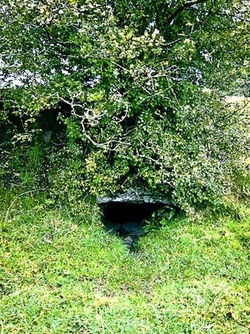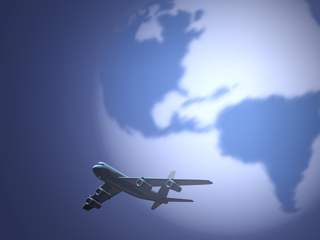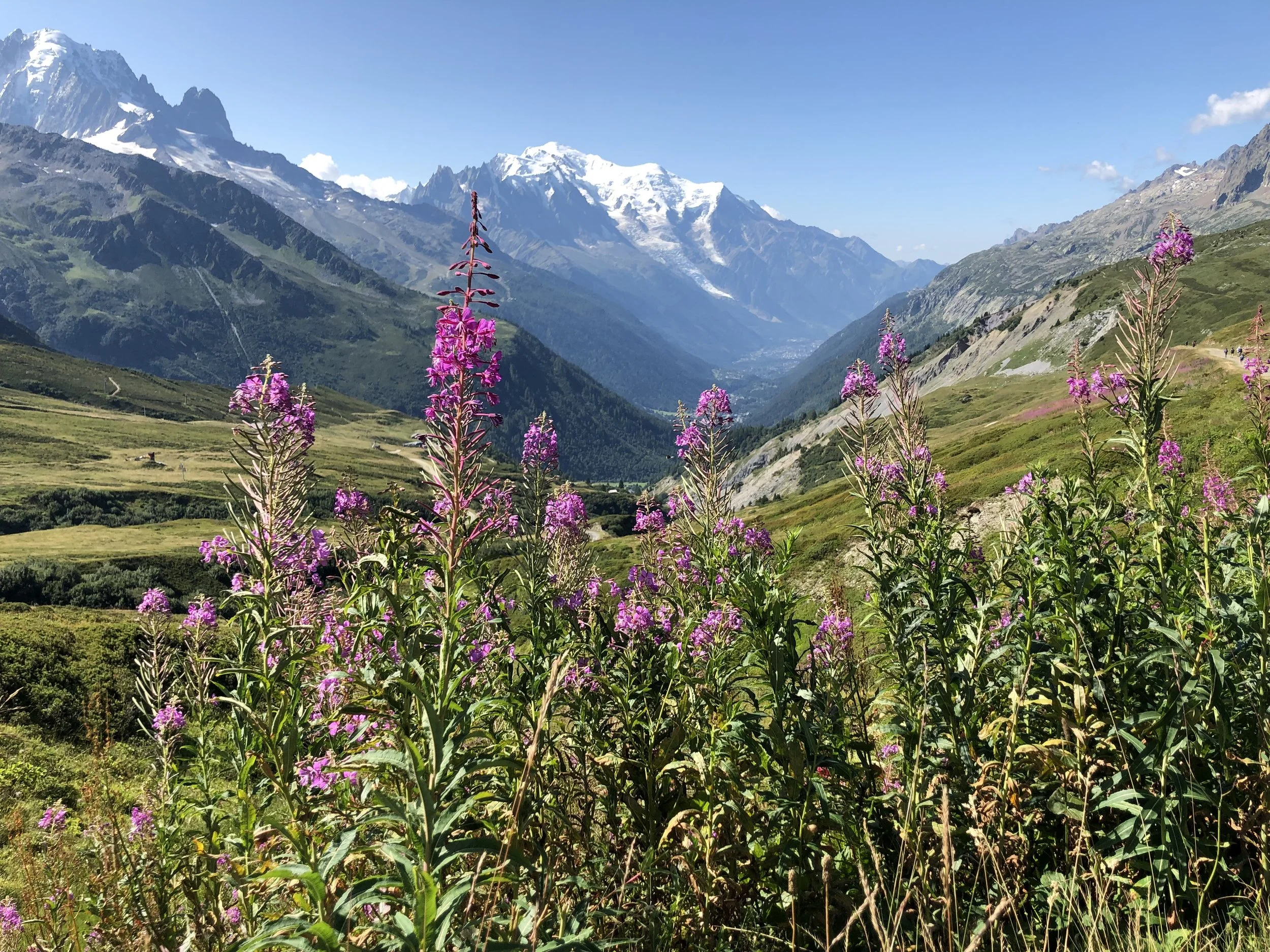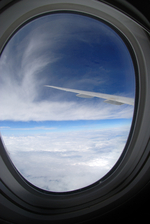At age sixty-four, Ellen Schecter signed up for a Tour du Mont Blanc hike despite her fear of heights. Pushing through nerves, she managed to trek along the steep and narrow trails, climb a ladder secured to the side of a mountain and cross a long swinging bridge high above a canyon. But it all came to a shuddering halt when she found herself petrified on all fours atop the rocky terrain. The mantra she had been repeating—“Feel the fear and do it anyway”—was no longer working.
All tagged fear
Somewhere I Have Never Traveled
For many, knowing where they come from can provide a deep sense of community. For Elyn Aviva, however, this period of global political chaos and pandemic has revealed an ancestral history of seeking refuge from war, oppression, and persecution. Could this explain the innate terror and compulsion to flee she experiences in times of crisis?
Into the Amphitheatre
A hike into the Amphitheatre at South Africa’s Royal Natal National Park to see the world’s second highest waterfall seemed like a good idea—until it didn’t. With heavy mist obscuring any possibility of a view and a water-slicked, cliff-hugging ladder providing the only way in or out, Richard Kitzinger suddenly found himself face-to-face with his greatest fears.
Out on the Edge Above the Arctic Circle
Past and present collide in unexpected ways when 80-year-old Gary White embarks on an arctic adventure to celebrate his wife's birthday and is forced to face his perception of the arctic as a dangerous and primitive place, a deeply embedded fear, he realizes later, formed as a ten-year-old boy.
Hiking Beyond Our Fears
When twin sisters set off on a hiking adventure in the Grand Canyon, a shared fear of heights threatened to ruin the trip. Learn how the sisters made the powerful choice to hike beyond their fears in a decision inspired by the gentlest flutter of a butterfly's wings.
12,000 Feet and Falling
by Harriet Mills
I had been in Australia for just over two weeks so I was firmly in the relaxed, travel state of mind when my Dad asked me if I wanted to do a skydive over Airlie Beach, the Whitsunday's, and the Great Barrier Reef. It sounded enticing so my straight answer was a prompt yes. This occurred on our first day of five in Airlie Beach and as time progressed my nerves began to rattle me. My sister had always been the daring one, but now I had placed myself in the position where I had to befriend my adventurous side.
Bhitarkanika Sanctuary: An Indian Getaway Into the Wild
The darkness of the night and the troublesome roads were worrisome, and at first it was a relief to get out of the car, but then the destination itself proved to be a scary proposition. Our ferry in the moonless night looked sinister. And when we thought about the fact that we had entered the terrain of ferocious crocodiles, the scene in front of me seemed straight out of the famous Anaconda movies. The lone lantern lighting the boat and the stillness of the water around us felt menacing. At first, most of us laughed to ward off our fear.
And then none of us spoke. Did we fear waking the reptiles? I do not quite know for I had become too numb to think coherently. Do not mistake me; I am not one of those who succumbs to fear very easily. But when it came to the prospect of being eaten by crocodiles, my mind became my own worst enemy. I kept repeating to myself that the creek was full of salt water crocodiles and I kept replaying the visuals of the Anaconda movie. In retrospect, and with objectivity, I can say that the boat ride was actually peaceful and serene.
If Only The Teachers Could See Me Now
I had to step back a few feet to get a glance of the Scott Monument from the ground up to the spire. It was terrifying and made me rather dizzy. (It reminded me of the time back in junior high when I froze at the top of a five-tier bleacher and it took a couple of teachers at least an hour to get me down.)
I was in my last full day of strolling around the streets of Edinburgh, taking in the remaining major attractions I wanted to see before leaving. For several days since my arrival, I had walked past the awe-inspiring gothic tribute to the famous Scottish author Sir Walter Scott. Located in the Princes Street Gardens, the monument, a cathedral-like structure, towers well above the other buildings on Princes Street and the surrounding area. This stunning piece of art, made from Binny sandstone, stands two hundred feet six inches tall, with a spiral staircase of 287 steps.
Confessions of a Tour Guide
by Melanie Webb
“Be grateful for whoever comes, because each guest has been sent as a guide from beyond.” - Rumi
Eiji and I ascended higher into the silence of a still autumn afternoon on the Colorado Plateau. The Wave, iconic redrock remnant of petrified sand dunes, disappeared below us. Twice already we’d cliffed-out, reached dead-ends where our path fell away into the abyss below and forced us to backtrack and work another angle.
“Are you sure you can get back down?” I spoke slowly to my Japanese guest and gestured to the steep slope we had just hiked.
by Elyn Aviva
 Even photos of the Cave of the Cats gave me the willies. I wasn’t going to enter it, not if you paid me. I was sure of that. My companions could go in if they wanted, but not me. We sloshed through the wet field to the entrance, a dark inverted triangle almost hidden by an overgrown thorn bush. A gash, a hole in Mother Earth. “No way,” I muttered, shaking my head. Jack, flashlight in hand, offered to go in first, and I watched him slither into the tight-fitting slit.
Even photos of the Cave of the Cats gave me the willies. I wasn’t going to enter it, not if you paid me. I was sure of that. My companions could go in if they wanted, but not me. We sloshed through the wet field to the entrance, a dark inverted triangle almost hidden by an overgrown thorn bush. A gash, a hole in Mother Earth. “No way,” I muttered, shaking my head. Jack, flashlight in hand, offered to go in first, and I watched him slither into the tight-fitting slit.
County Roscommon in western Ireland has a reputation for being boring, but it is anything but. The Rathcroghan complex has been a powerful place since the Neolithic, roughly 6000 years ago. It is an enigmatic landscape shrouded in myth, the burial place of long-forgotten heroes and the kings and queens of Connacht. It is one of the legendary “Celtic Royal Sites” of Ireland, ranking with the better-known Hill of Tara. Like Tara, Rathcroghan unites legend with history. It includes over 200 sites: ancient earthworks, tumuli, ceremonial avenues, ring forts, standing stones, the remains of a Druid school, holy wells, and caves. We’d come for the caves—one in particular, the Cave of the Cats.
Oweynagat (pronounced “Oween-ne-gat” or “UUvnaGOTCH”) or the Cave of the Cats is a spooky place, filled with powerful energies both of the earth and of the Otherworld. The Morrigan, Celtic goddess of death, destruction, and passion, is said to reside within.
by Eric Lucas
We have nothing to fear but fear itself.
I was thinking about FDR’s famous axiom during my adventures on a particularly gruesome golf hole in Arizona over the New Year holiday. Afraid of slicing my drive right I hooked it left into the desert. Afraid of overshooting the hole, I hit a weak chip into a sand trap. Afraid of not reaching the green, I blasted out of the sand completely over the hole. Afraid of a knee-shaking downhill putt, I came up 3 feet short of the hole. Next putt—right by it, like a locomotive, afraid of coming up short again.
 © Orlando Florin Rosu | Dreamstime.com
© Orlando Florin Rosu | Dreamstime.com
Despite those travails, it was a beautiful day in the Arizona sun.
I flew there from my home in Seattle. Not afraid.
That makes me different from the most important air travelers in our world today, the government officials who set transportation security policy. They are all scared to death—not of terrorism, so much, but of being blamed for it. FDR was right about fear when he prefaced his response to the Great Depression. We need to remember his thought before we wind up flying around the world buck naked, handcuffed and, as LA Times commentator David Steinberg puts it, wearing padded headgear so we can’t use our skulls to bash open a window to bring a plane down.
Wow—could a terrorist really do that?
Plane Talk: Got a question? Ask the Captain!
Do you have a question about airline safety, flight etiquette, jet lag, or air travel in general? Submit your question and look for answers in a future column.
 "I fly a lot and love to travel. In spite of this, I have never gotten over my fear of turbulence. I have what may be called "anticipatory anxiety". The minute I step on the plane I worry over the "anticipated" turbulence. I know in my mind that turbulence isn't dangerous, but I guess in the deep corners of my mind, I feel that the plane may go out of control, or fall, or ???? How can I get over this fear? I've tried therapy, biofeedback and relaxation techniques. They work to a certain extent." - Margo
"I fly a lot and love to travel. In spite of this, I have never gotten over my fear of turbulence. I have what may be called "anticipatory anxiety". The minute I step on the plane I worry over the "anticipated" turbulence. I know in my mind that turbulence isn't dangerous, but I guess in the deep corners of my mind, I feel that the plane may go out of control, or fall, or ???? How can I get over this fear? I've tried therapy, biofeedback and relaxation techniques. They work to a certain extent." - Margo
 Hi Margo,
Hi Margo,
I certainly understand your anxiety and you are definitely not the "Lone Ranger" out there. A medical doctor, I am not. Nor am I a doctor of any sorts, I am a pilot. What I share with you is knowledge from this perspective. I hope what I say is of some help. I can explain to you the "why" and "how" an aircraft flies, but here, I will briefly go over some flight conditions.......just for you.
Hummmmmm ................turbulence, the "rock and roll" of flying.
First let me say......
Aircraft are actually "airships" riding on and in rivers of air instead of water. They ( the airships...a.k.a. airplanes ) are designed and manufactured to a much higher standard than almost any other type of construction. This is so airplanes can bend by design and yet, stay strong. These are both good things.









